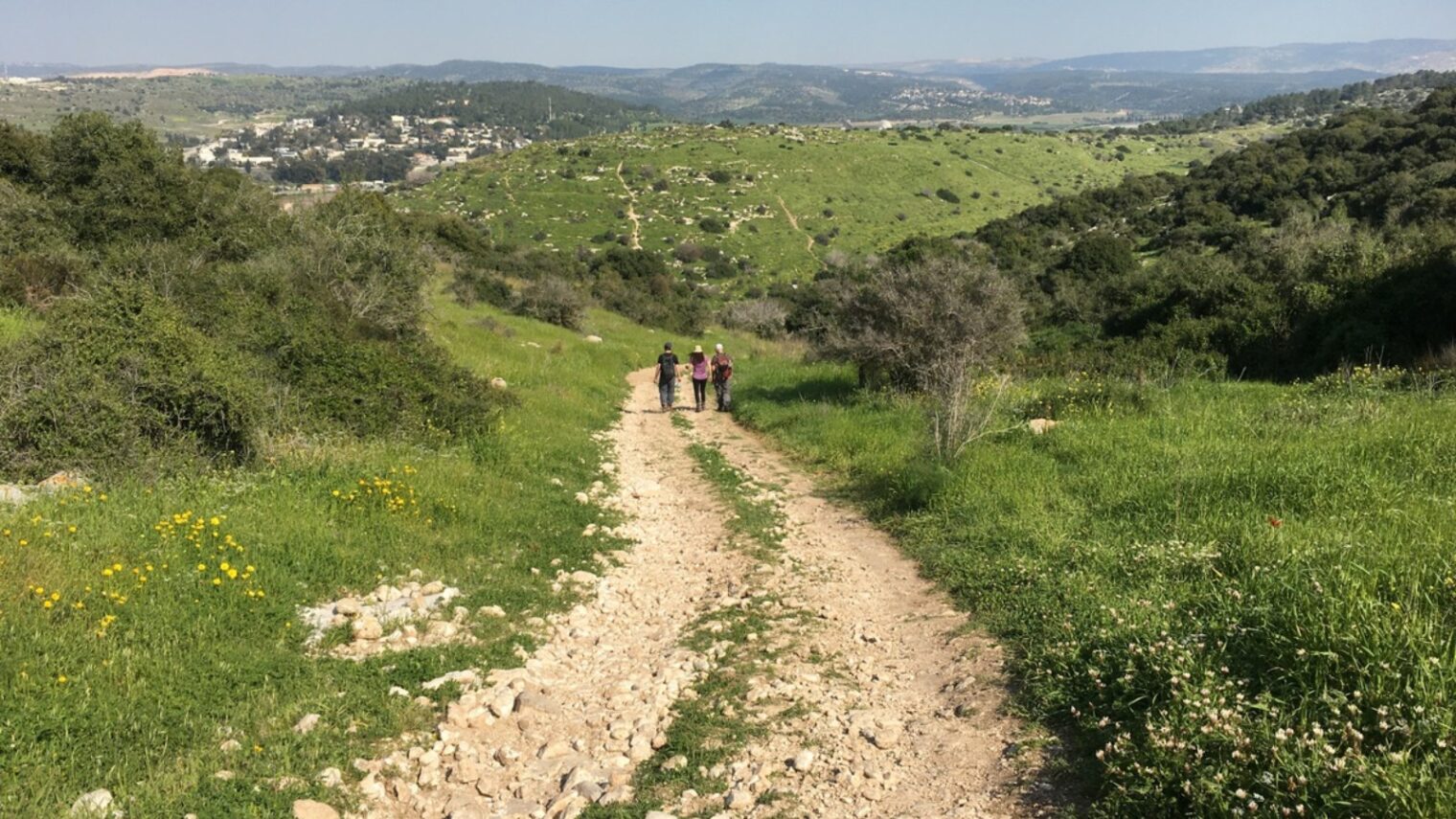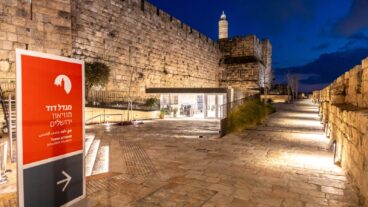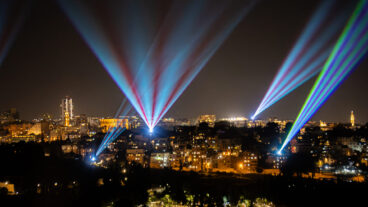Israel has amazing scenery and some beautiful nature treks, but here in the Holy Land, hiking frequently intersects with history.
Where did the prophets walk? Can you visit King Solomon’s palace? How about following in the footsteps of Jesus? Where did David meet Goliath?
ISRAEL21c is happy to present to you 15 fascinating hikes inspired by both Jewish and Christian Scriptures so that you can imbibe biblical history while flexing your muscles.
Jerusalem and central
- David vs. Goliath in the Elah Valley
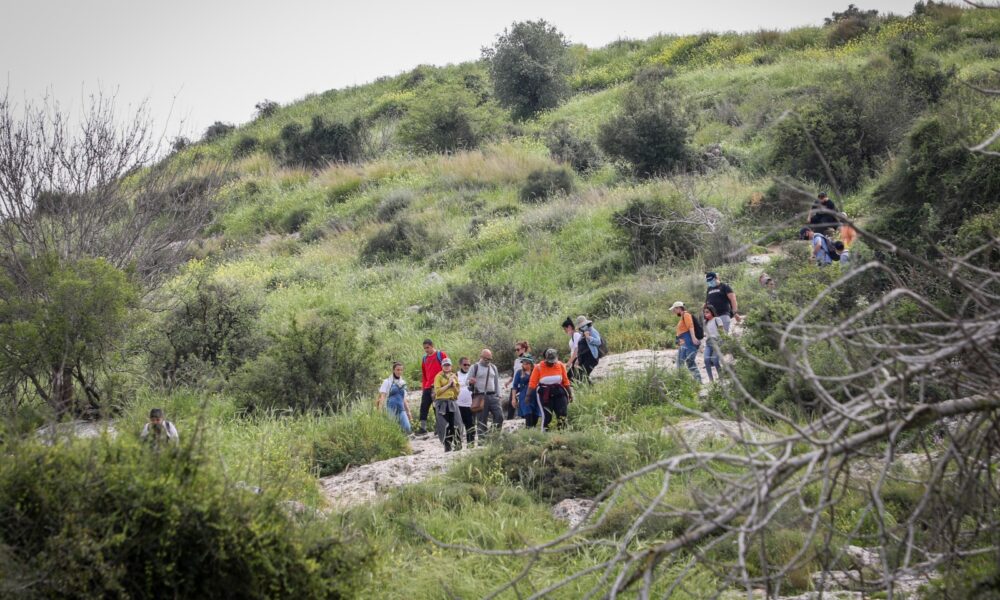
The future King David defeated the Philistine giant Goliath in the Elah (Ella) Valley, according to the book of Samuel. Now you can visit where it happened by hiking between the ruins of the ancient villages of Azekah and Shaaraim, in the outskirts of Beit Shemesh.
The climb to Azekah, accessible via Britannia Park, is lined by plaques with biblical verses. Choose the long (10km) or shorter (5km) trail.
As long as you’re in the Elah Valley, don’t miss Givat HaTermosim (Lupine Hill, aka Tel Socho) where for a few weeks in the spring, purple lupines blossom in the tens of thousands. Perhaps if Goliath had noticed the flowers, he might have laid down his armor?
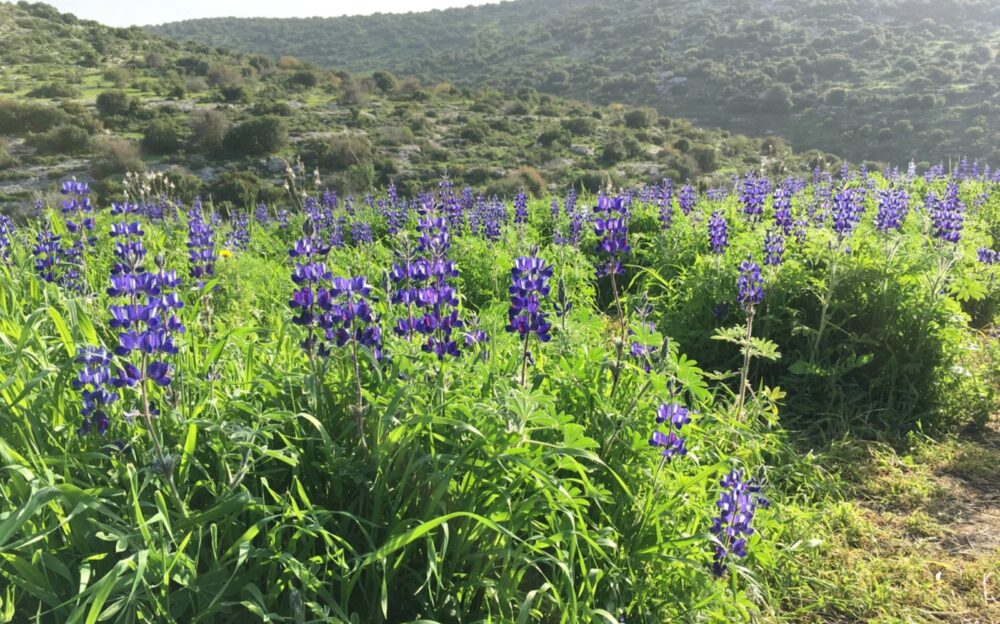
- Tel Lachish
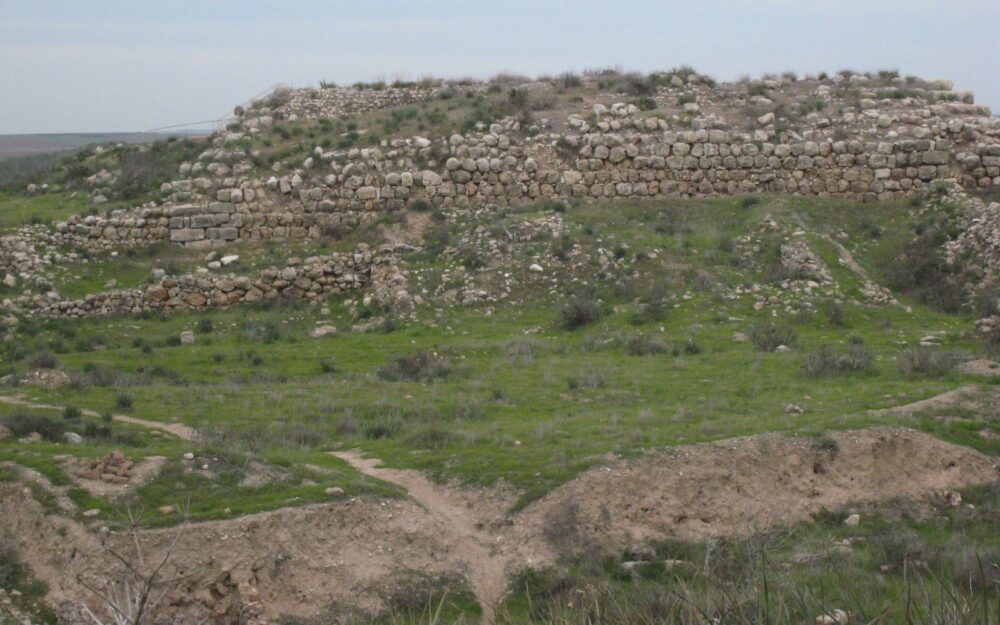
While you’re in the Beit Shemesh area, Tel Lachish is a must-see biblical attraction. Lachish was one of the Canaanite cities that fought against Joshua in the Battle of the Amorite Kings.
Set Waze to Moshav Lachish and climb to the top of the mound, which archeologists discovered and began excavating in 1929.
The earliest remains found in Tel Lachish belong to the Neolithic period (8300-4500 BCE). Lachish flourished under the late Bronze Age rule of the Egyptians, but by 1140 BCE, the city was razed (either by the Israelites or the Philistines, it’s not clear) and remained abandoned for two centuries.
The quick hike up and down the hill is pretty enough, but if you’re feeling energetic, expand your radius to include nearby Beit Guvrin National Park.
- Ayalon Valley
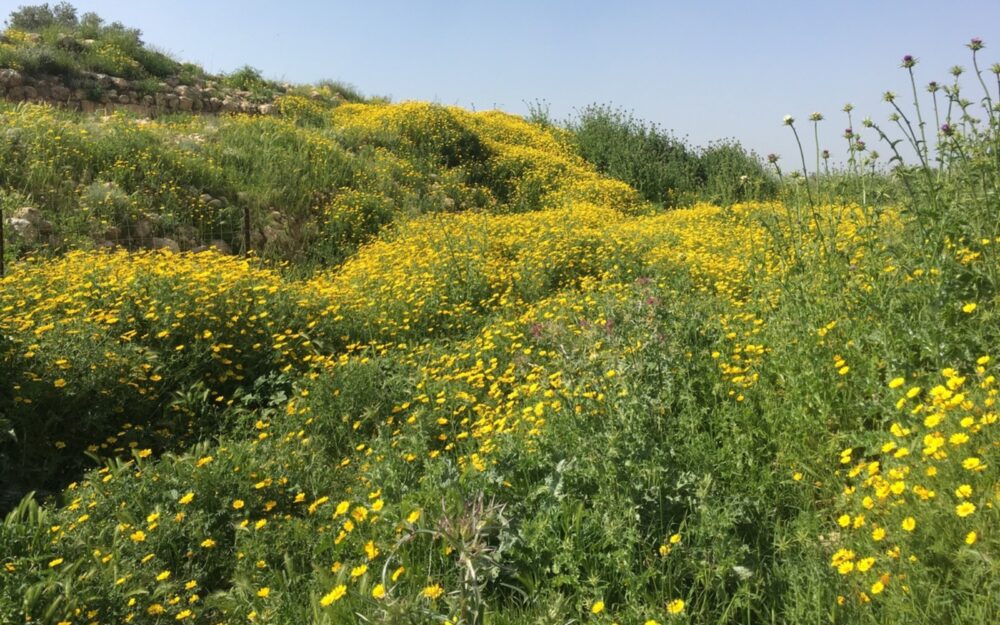
In that battle with the five Amorite kings, the book of Joshua explains that the Israelite leader’s army chased the Amorites from Gibeon, in the Judean hills, down to the Ayalon Valley.
But there wasn’t enough time to finish the job, so Joshua cried out to God to extend the daylight hours: “Sun, stand still over Gibeon, and you, moon, over the Valley of Ayalon.”
To follow in Joshua’s footsteps, start this 5km in-and-out hike near Modi’in and follow the blue trail (with optional detours on the green and black trails to check out some cool ruins). Take a break at the Mitzpeh Kramim viewpoint for a picnic while imagining the biblical battles.
- Tzurim Valley
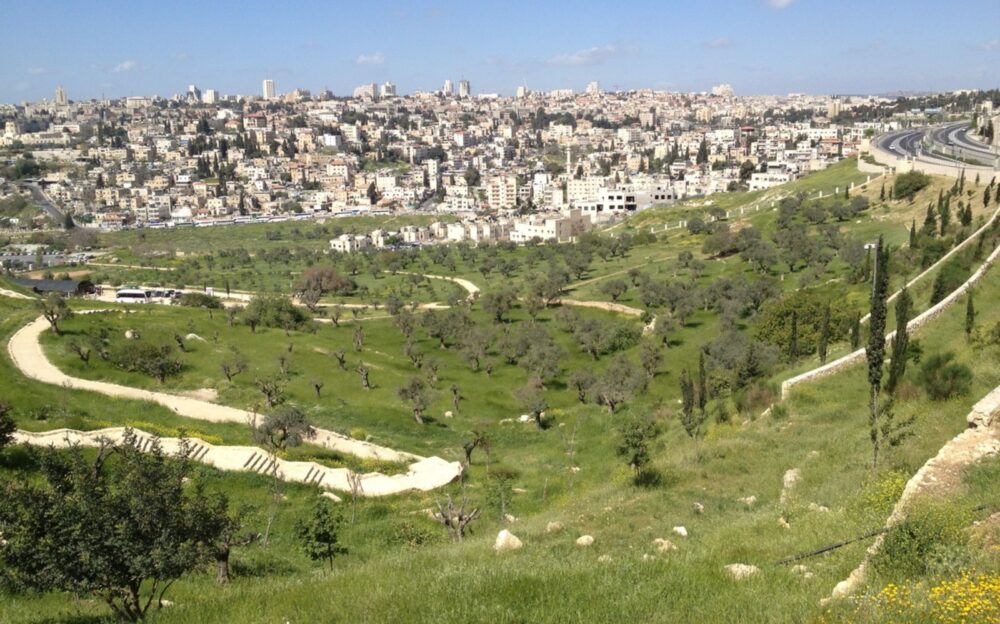
This hike starts near Hebrew University’s Mount Scopus campus and winds through Emek Tzurim until it reaches the Church of Mary Magdalene and the Gethsemane biblical pilgrimage site.
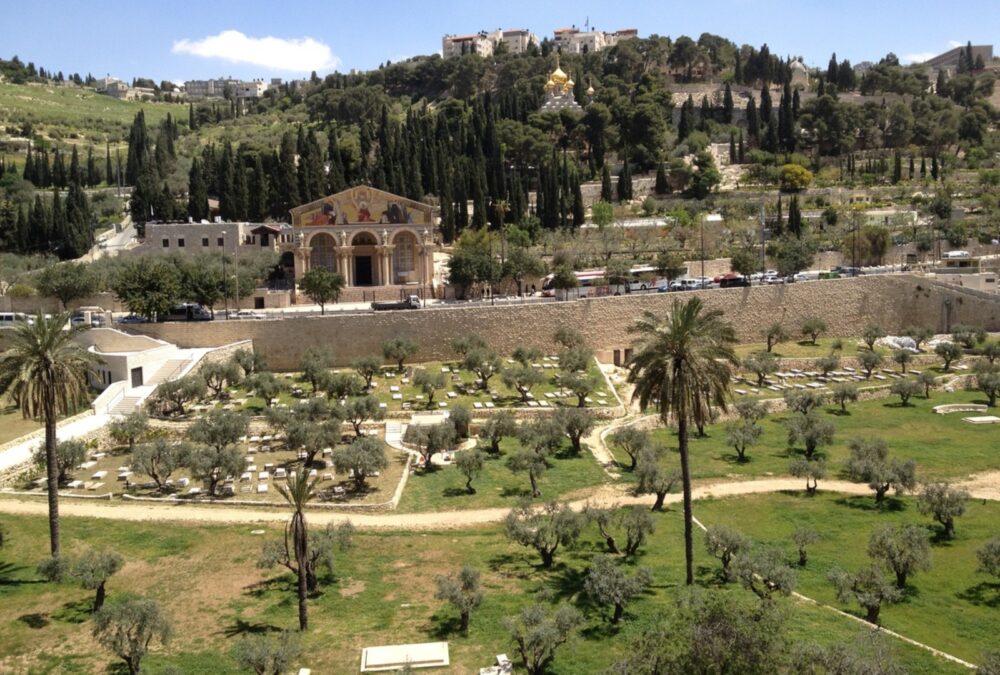
The trek is nestled between Jerusalem’s Old City to the west and the Mount of Olives to the east, with the Temple Mount always in full view (the City of David is nearby, too).
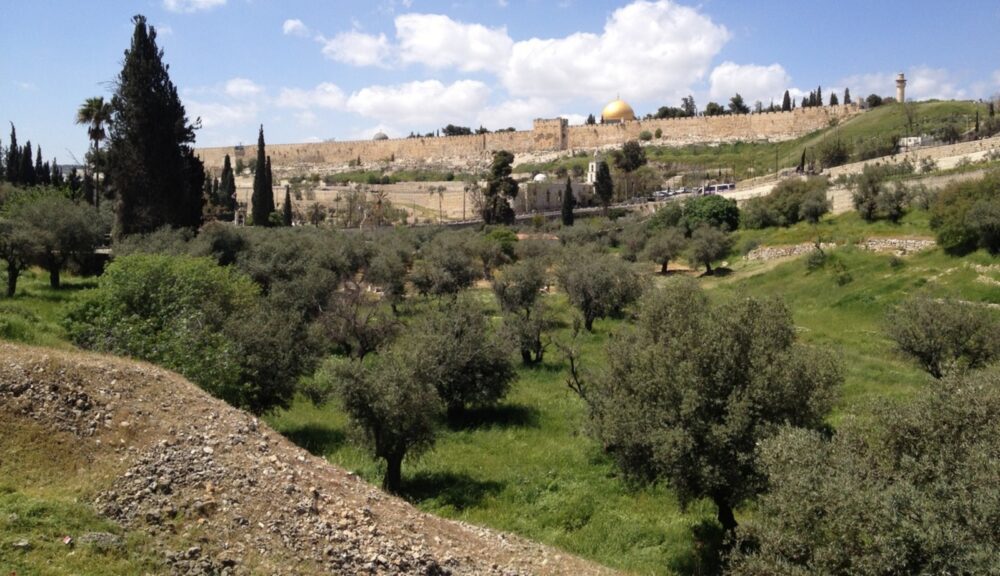
Emek Tzurim is part of Park Jerusalem, whose 42 kilometers circle the city. Since this is a one-way hike, not a loop, take public transportation and get off at the Givat Hamivtar light rail line.
Northern Israel
- Mount Tabor
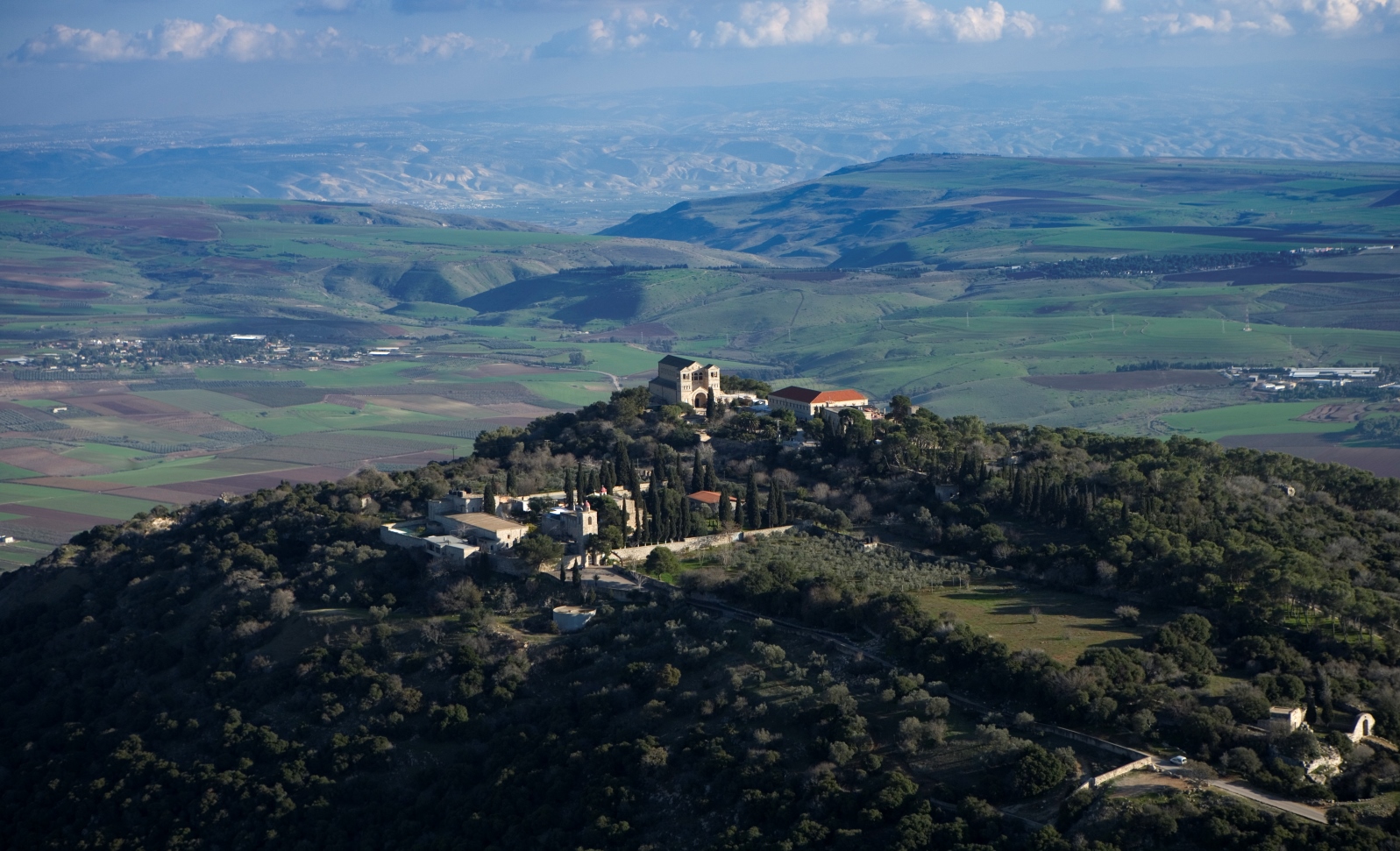
Deborah the prophetess famously fought alongside General Barak against the Canaanite king Jabin and his head of army, Sisera, at Mount Tabor. Sisera commanded a force of 900 iron chariots, but Deborah recruited 10,000 warriors, according to the book of Judges; she ultimately prevailed.
There are two ways to hike Mount Tabor, which is west of Nazareth: straight up from the base (a 6km trek), or take your car to the top, where there’s a shorter loop starting from the Church of Transfiguration (built in 1924 on the ruins of an earlier fourth century Byzantine church, it’s the traditional location where Jesus was transfigured with bright rays of light).
- Mount Gilboa
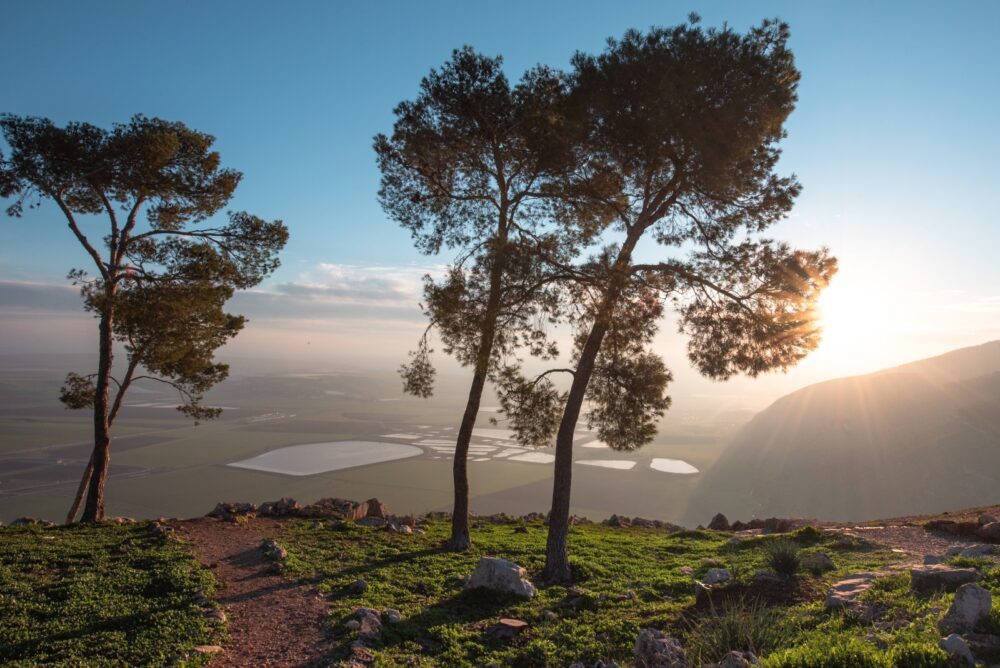
A mountain ridge that marks the border between the Jezreel Valley and the hills of Samaria, the Gilboa rises some 500 meters above the plains for fantastic views of the Sea of Galilee, Haifa and even Mount Hermon.
Mount Gilboa was the setting of a fierce battle between the Philistines and the Israelites, led by King Saul. It was during this fight that Saul falls on his sword to avoid being captured by the enemy.
There are two short hikes: a 1 km circular hike (green trail) that passes along the edge of the cliff (watch out for paragliders!), and a 2km circuit that goes down the along the ridge (you walk back to your car along the main road).
The best time to hike is in the spring, when the Gilboa Irises are in full bloom.
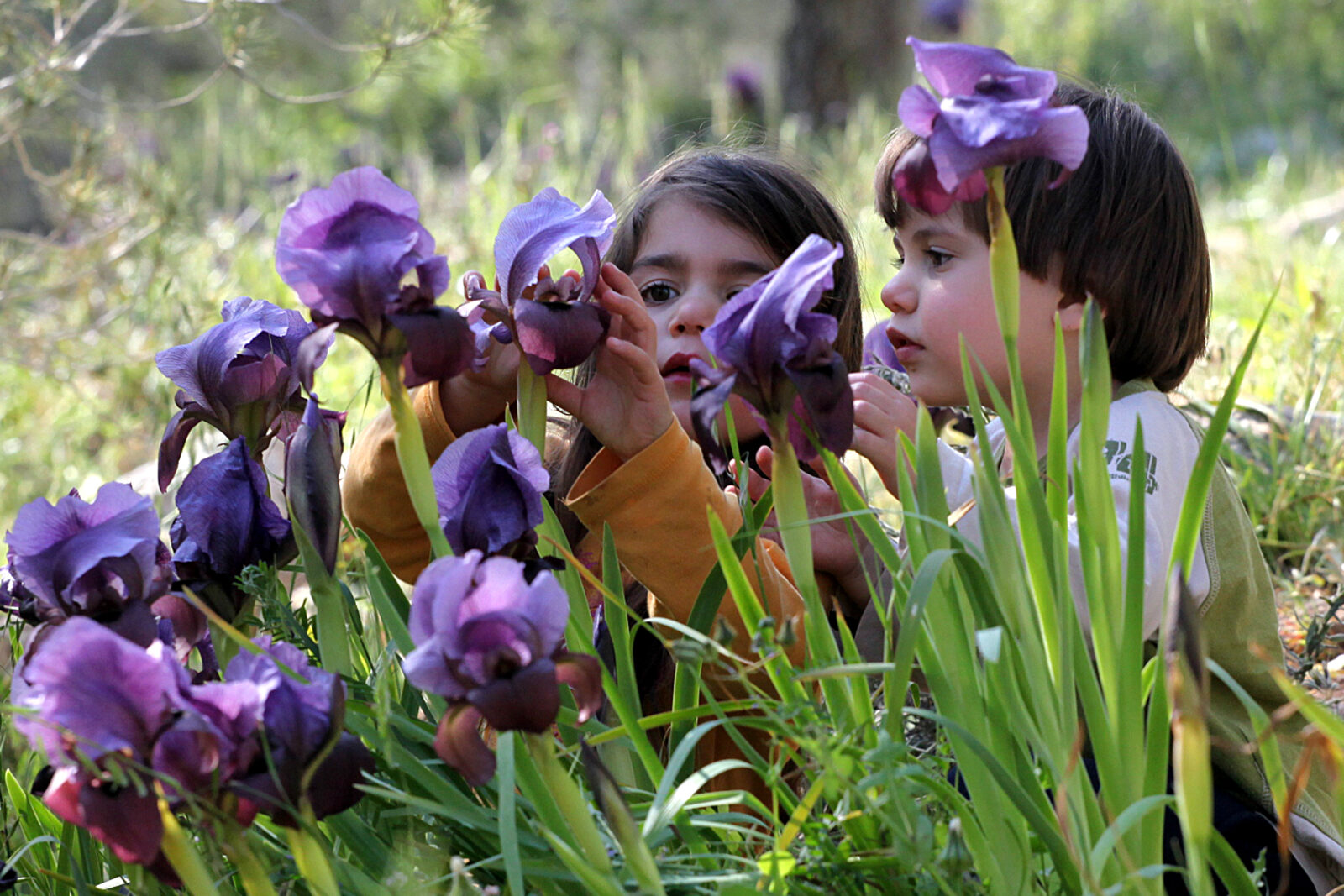
- Mount Carmel
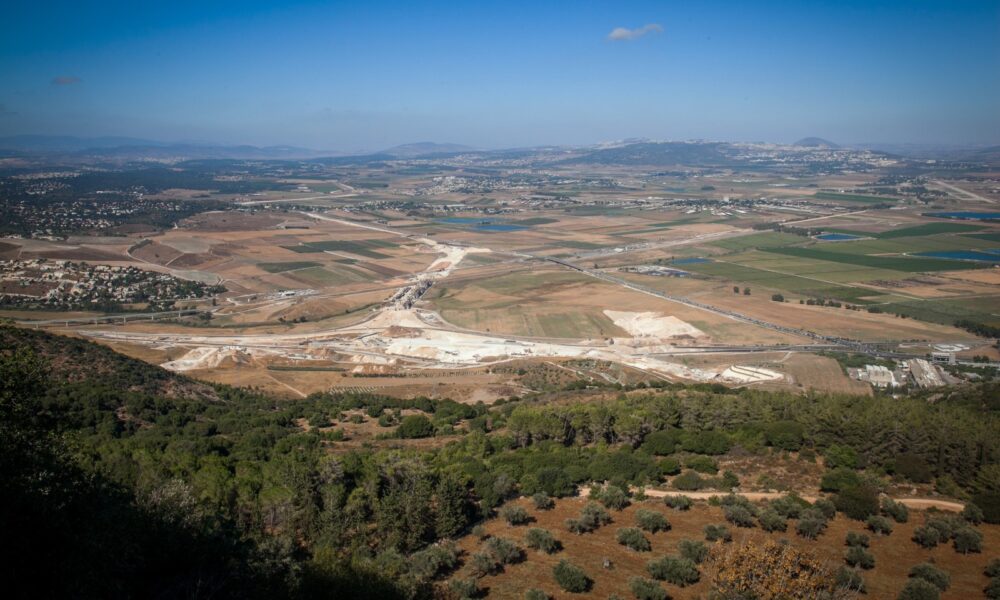
High above the modern city of Haifa, on Mount Carmel, the prophet Elijah challenged King Ahab and the prophets of the Canaanite deity Baal, as told in the book of Kings.
Set Waze for the parking lot near Muhraka. Follow the red trail to the Karach ruins (a late Roman/Byzantine Jewish settlement). Continue to the 17th century Carmelite Monastery of the Prophet Elijah.
On a clear day, you can see all the way to Mount Hermon. This easy, two-car hike is 7.5km without a lot of ups and downs.
Dead Sea and south
- Sodom
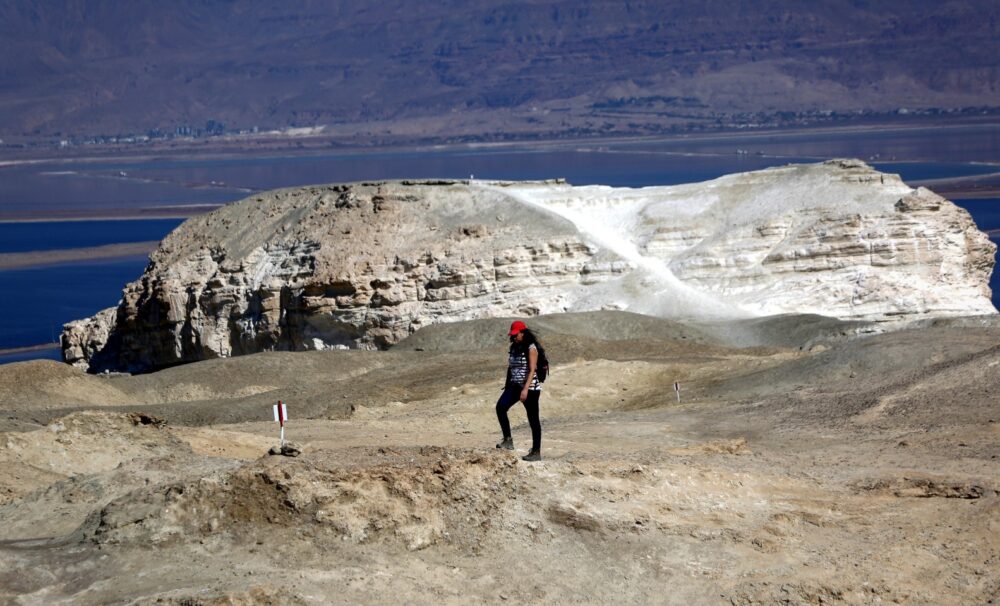
One of the most famous stories in Genesis tells of Lot and his flight from Sodom as God prepares to rain fire and brimstone on the city for its wanton wickedness. When Lot’s wife looks back at her home, she is tragically transformed into a pillar of salt.
To hike the area, look for the signs and start on the blue trail. There are 250 steps and three ladders, but it’s worth the effort: From the top, you’ll be treated to panoramic views of the Dead Sea and the Moav mountains in Jordan. The biblical highlight: the “Lot’s wife” rock pillar.
Total hiking distance: 7.5 kilometers. There are also around 150 salt caves although most of them are closed due to the danger of rocks falling.
- Etzion Geber
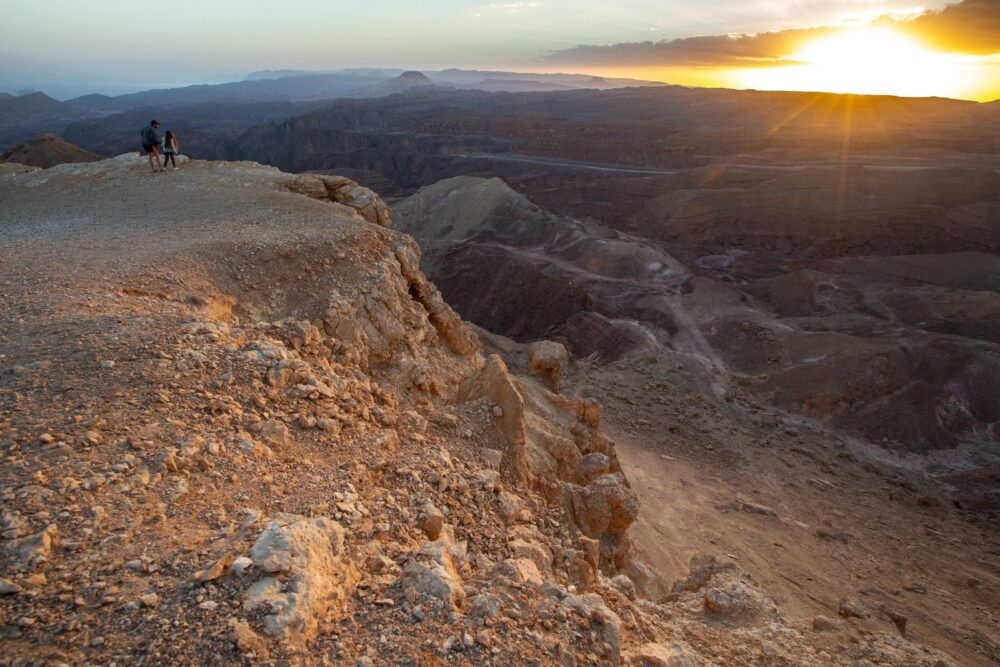
You might think there would be no biblical history in Israel’s southernmost city of Eilat, but according to the book of Kings, “King Solomon also built ships at Etzion Geber,” an ancient seaport located between the modern towns of Eilat in Israel and Aqaba in Jordan. The actual site of Etzion Geber is in Jordan.
Excavations indicate a fortified and prosperous settlement dating to the period of the Judean kingdom. Etzion Geber is mentioned several times in the Bible – in Numbers (“And they departed from Ebronah and encamped at Etzion Geber”) and Deuteronomy (“through the way of the plain from Elath and from Etzion Geber”).
Climb from the Eilat Field School to the summit of Mount Tzfachot on the green trail for a fantastic view of the entire area. Then return via the blue trail to the main road. Plan for up to four hours of hiking.
Biblical hikes with particular interest to Christian travelers
- Emmaus Trail
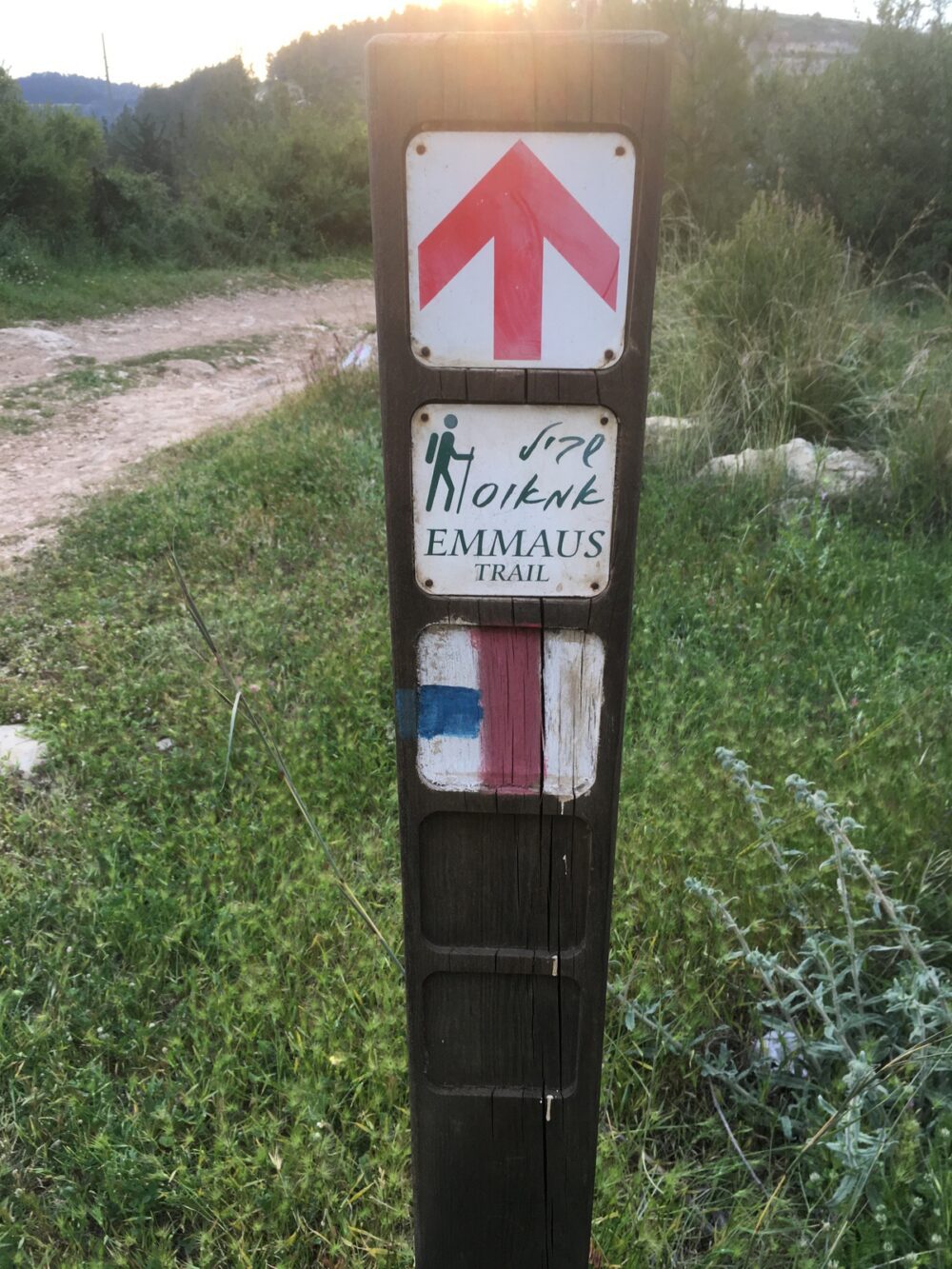
According to the Gospel of Luke, after Jesus was resurrected, he met two disciples on the road traveling from Jerusalem to the village of Emmaus Nicopolis, about 30km to the west, in what is today Ayalon Canada Park.
A newly inaugurated hiking path, the Emmaus Trail, allows modern trekkers to follow in the footsteps of that story.
The trail starts near the village of Abu Ghosh, cutting the total distance to a more manageable 18 kilometers. Give yourself time to explore the Saxum Visitor Center, a state-of-the-art multimedia museum dedicated to the life of Jesus. Then head down into Nahal Yitla on the black trail, switching to the red trail near Neveh Ilan.
- Bethsaida
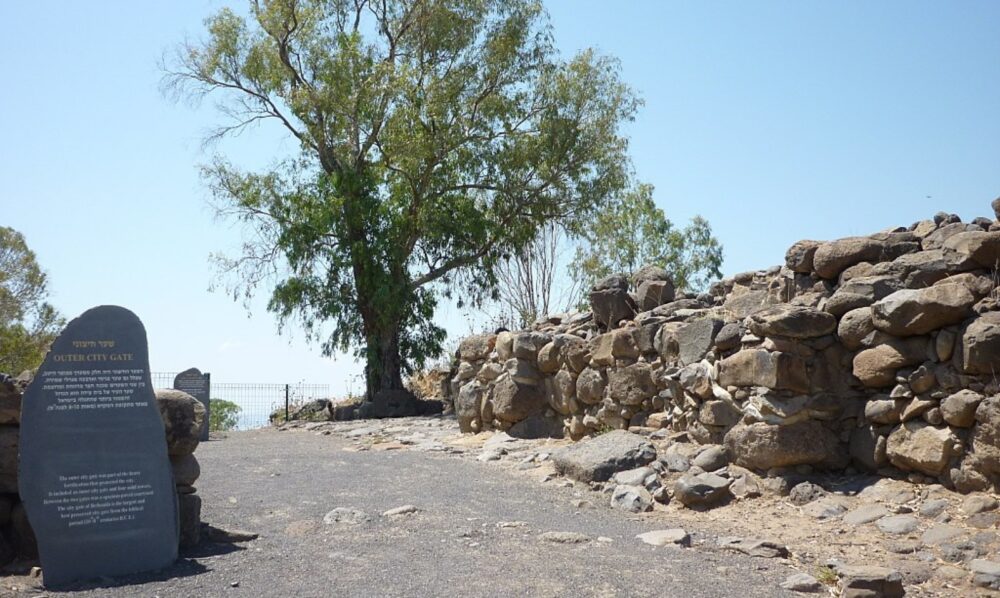
Bethsaida is where the Gospels locate the miracle of the healing of the blind man as well as the birthplace of the Apostles Andrew, Peter and Phillip. Today, the ruins of Bethsaida are located within Jordan River Park, a recreation area in the Golan Heights with hiking trails as well as a campsite and picnic areas.
The walk to the ruins is only 500 meters – follow the black trail. While you’re there, you can add short hikes of between one and three kilometers; the red trail markers will take you past two reconstructed flour mills. Bethsaida was originally “Beit Tzeida” or the “House of Fishing.”
- Capernaum to Tabgha

These are among the most visited religious pilgrimage sites in the Holy Land. Both are on the shores of the Sea of Galilee, about two kilometers from each other, making for a pleasant biblical hike.
Tabgha is on the northwestern short of the sea. It is considered the place of the “miracle of the multiplication of the loaves and fishes,” described in the Gospel of Mark, and the fourth resurrection appearance of Jesus (John 21).
Capernaum is the site of an ancient fishing village established around 1000 BCE. Today, there are two religious compounds belonging to the Franciscans and the Greek Orthodox, respectively; a fourth century synagogue; and the ruins of what is believed to be the house of Peter the Apostle.
Walk between the two sites along the purple trail, then return on a paved promenade that parallels the main road.
- Nahal Tzipori
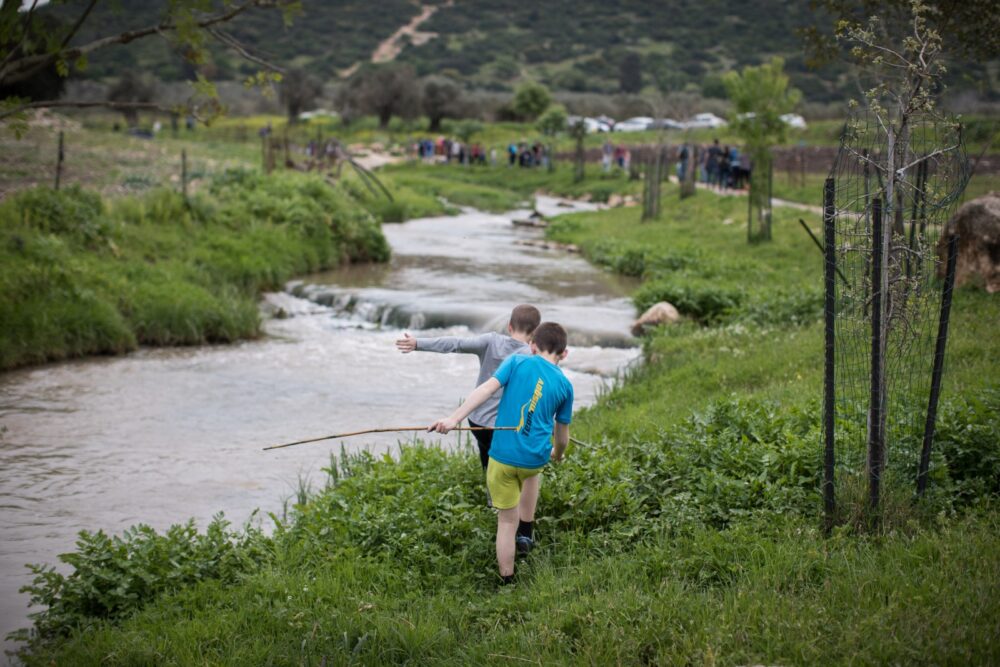
Near the city of Nazareth, which is chock-a-block full of sites of Christian interest as well as culinary delights (including freekeh at the Elbabour spice mill; kadaif from Abu Ashraf; and knafeh at Mahroum’s pastry shop) you can take a pretty stroll along Nahal Tzipori (Sepphoris Stream) to the Ein Yivka swimming hole.
- Jesus Trail
When you’re done eating your way through Nazareth, work off your sweets by hiking some of the 65km Jesus Trail stretching from Nazareth to Capernaum along the Sea of Galilee.
The trail passes many highlights of Jesus’ life as it winds its way from downtown Nazareth to Tzipori National Park: the churches of Cana (where tradition says Jesus turned water into wine), the Horns of Hattin (where Saladin defeated the Crusader army in 1187), Arbel National Park and Nature Reserve, the “Jesus boat” at the Yigal Allon Center and the Mount of Beatitudes.
The whole trek takes four days – you can find accommodation along the way or use two cars to turn the trail into a series of day trips.
Bonus hike
- Neot Kedumim Nature Reserve
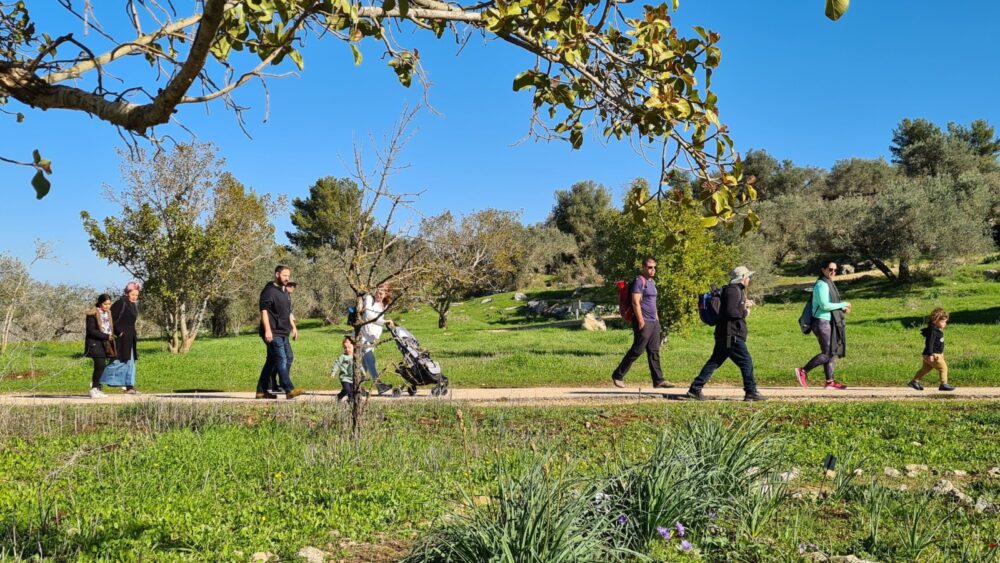
Neot Kedumim, located midway between Jerusalem and Tel Aviv, comprises 625 acres of a “biblical landscape reserve” recreating the physical setting of the Bible “in all its depth and detail, allow[ing] visitors to see life as it was lived by our ancestors 3,000 years ago.”
This includes Abraham’s Tent made of hand-woven goat hair; an educational exhibition of different “sukkot” (including one on a boat, one on a camel and one in a horse-drawn cart); and a large amphitheater seating 1,200 people suitable for group ceremonies.
Signs are posted throughout with relevant quotes in Hebrew and English from biblical texts. You can hike on your own or join a guided tour, which includes operating an oil press and working with a hand mill.




